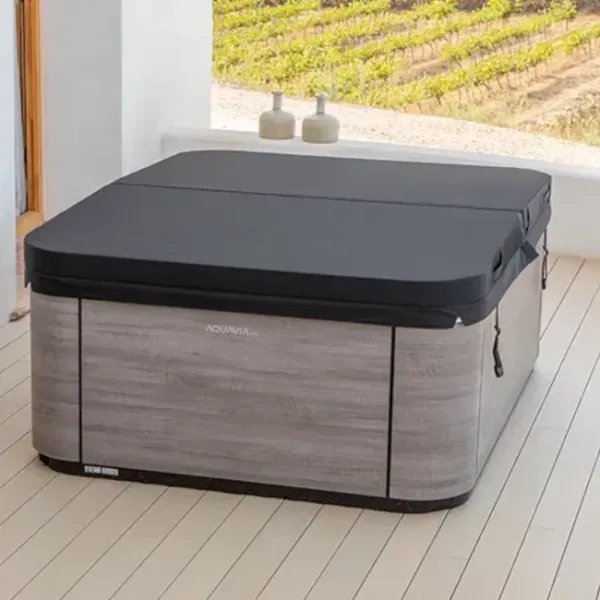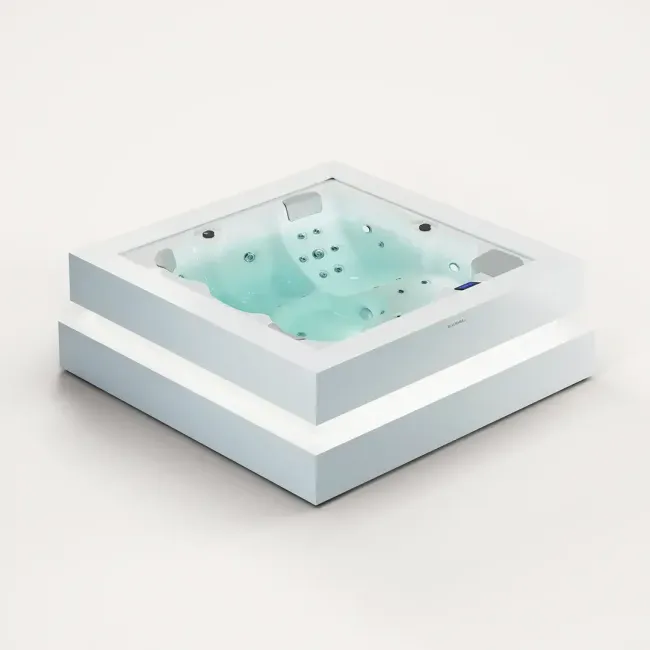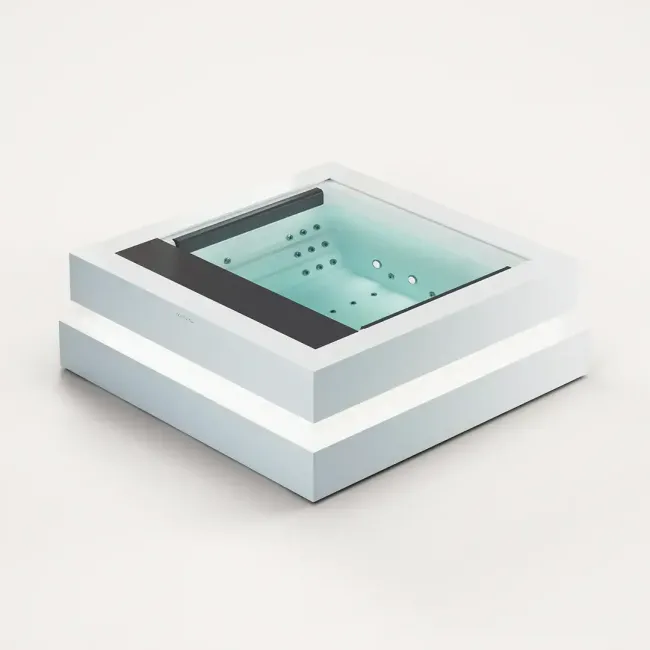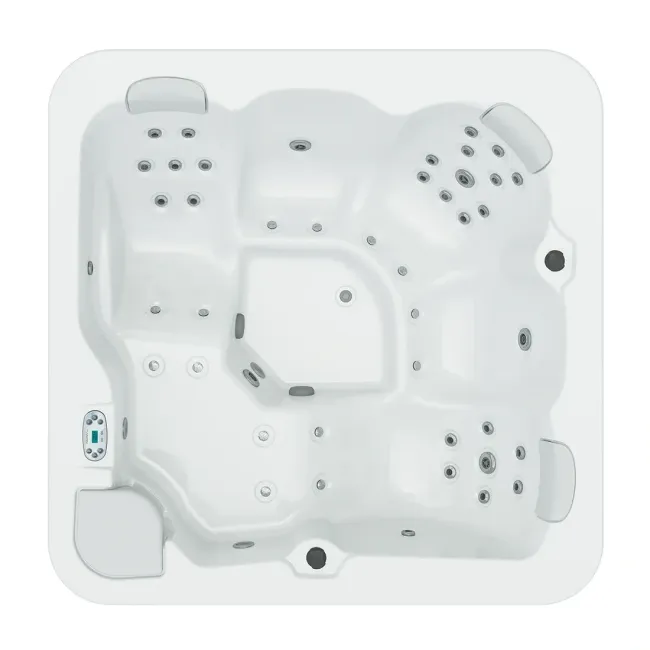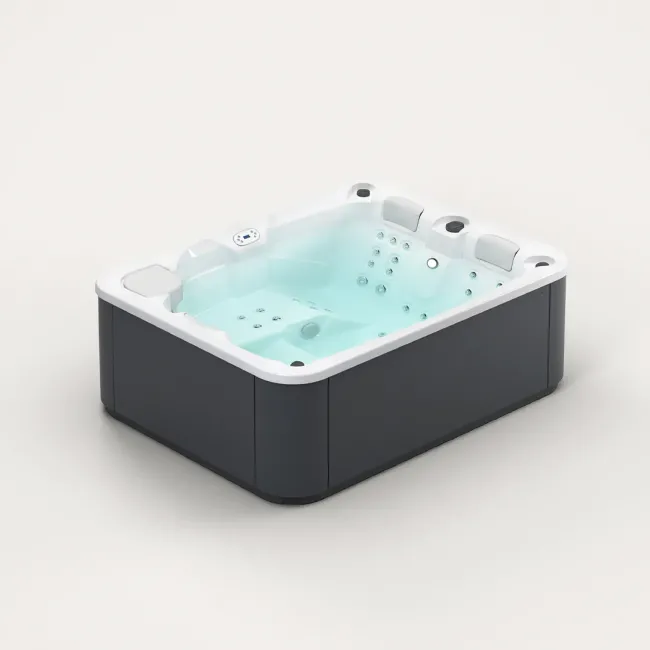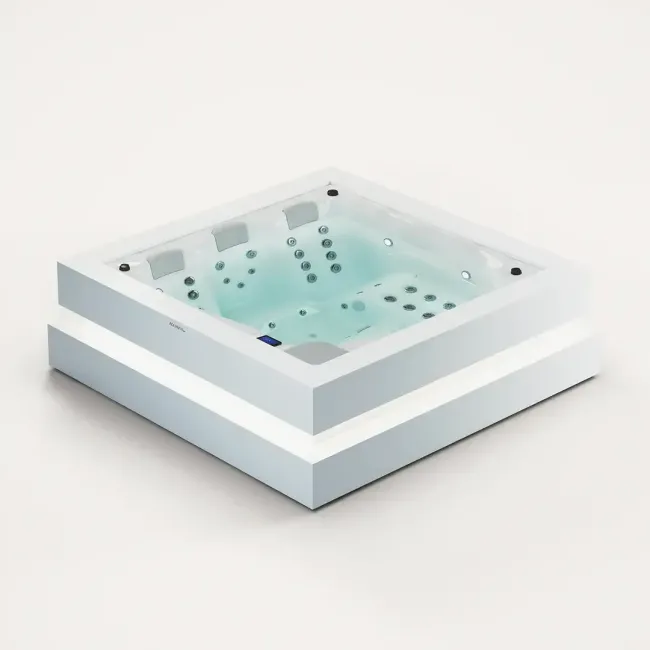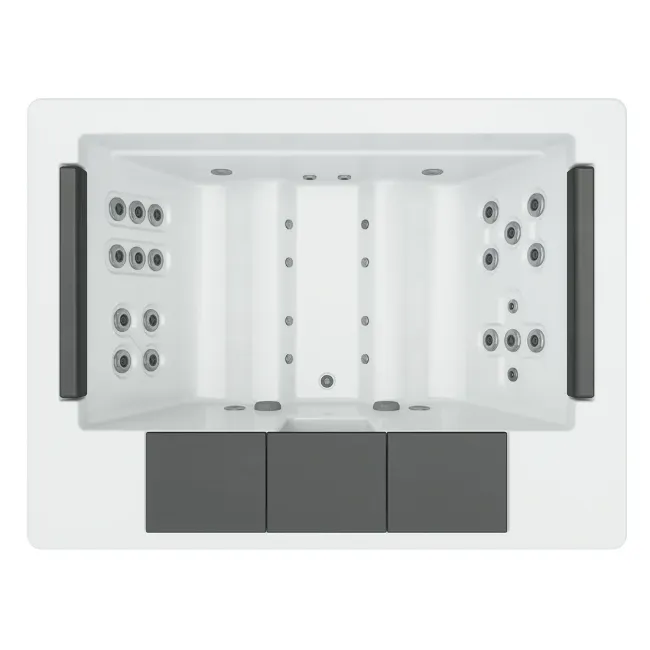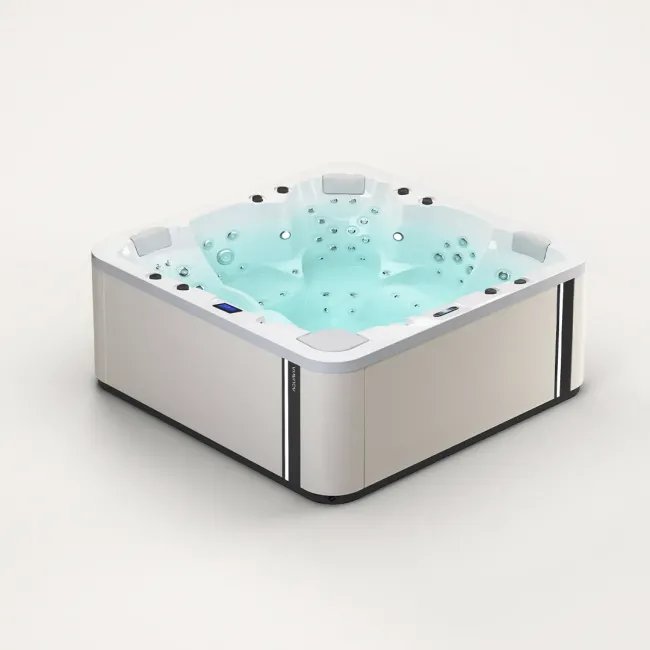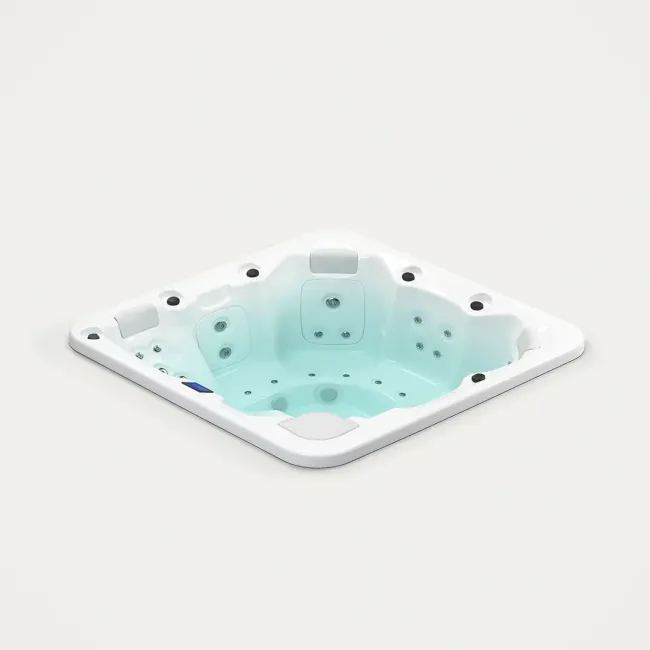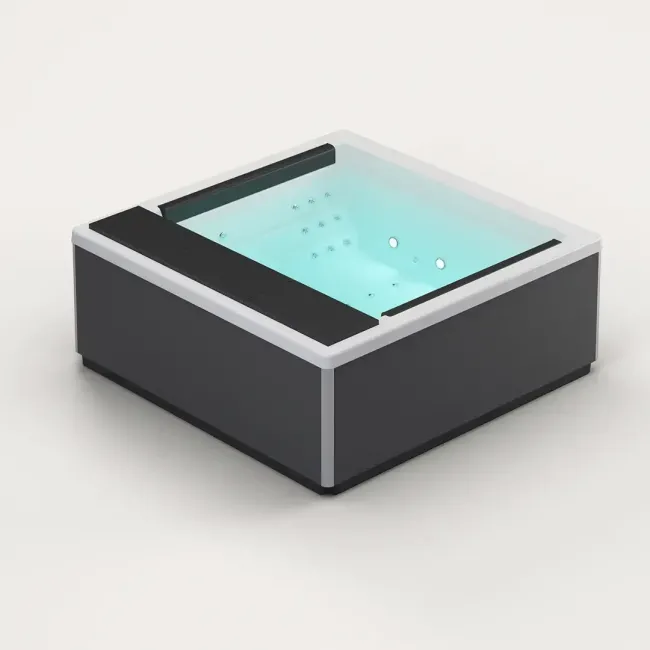Choosing a heat pump for your jacuzzi or hot tub is one of the most important decisions if you want to enjoy your system year-round without skyrocketing your energy bill. Beyond comparing heat and cooling pump prices, it's crucial to understand the underlying technology and how it integrates into your system to ensure comfort, reliability, and sustainability.
Below, we present a practical guide to help you choose a hot tub heat pump wisely, aimed at maximizing your well-being and the return on your investment.
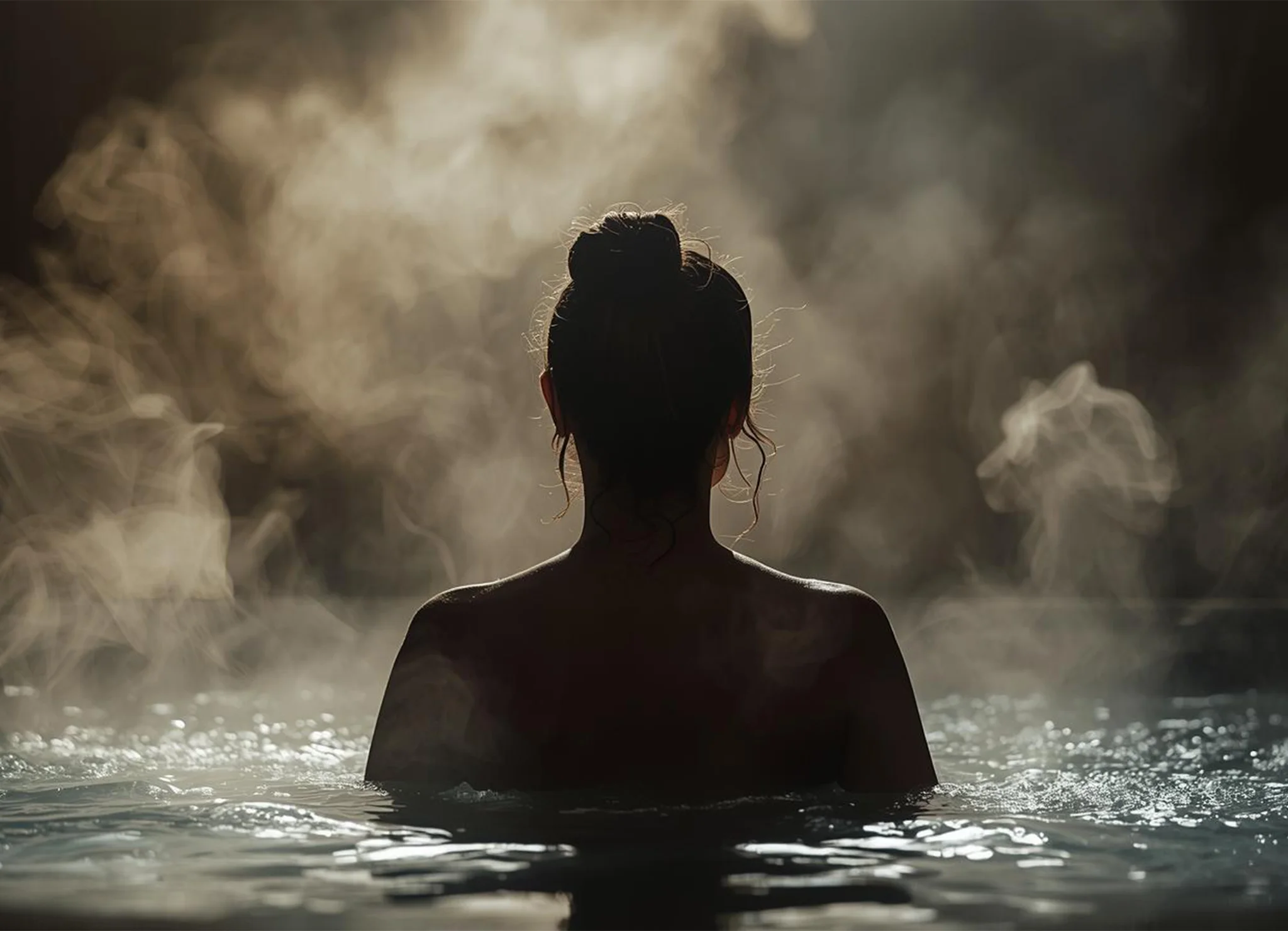
Why a heat pump improves your hot tub experience
A reversible heat pump has become the most efficient hot tub heating system on the domestic market. Unlike traditional electric heating elements, which only heat the water, the heat pump:
- It harnesses the energy of the outside air to transfer heat to the water, consuming much less electricity.
- It allows you to heat and cool water, adapting the temperature to each season and personal preference.
- The annual usage time of the hot tub increases significantly, especially in climates with cold winters or very hot summers.
- It contributes to the energy efficiency of the hot tub , reducing the carbon footprint and operating costs.
In practice, a properly sized and correctly installed reversible hot tub pump offers you a stable and comfortable temperature, a better hydromassage experience, and smarter energy management.
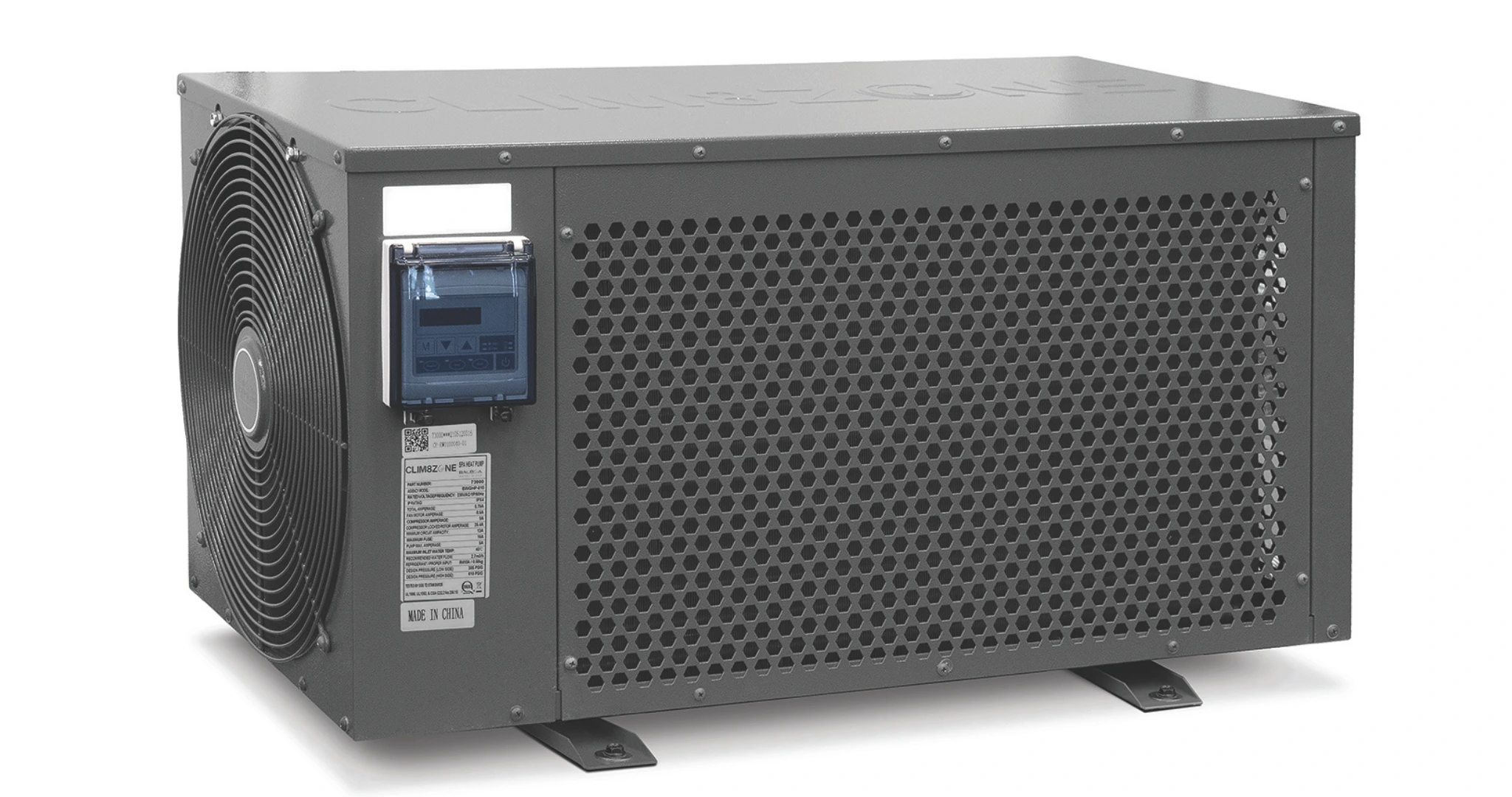
Key factors when choosing a reversible heat pump
Before making a decision, it is advisable to analyze several technical and functional aspects that directly impact the pump's performance and your user experience:
- Water volume and hot tub size
The volume of the pool (number of seats, depth, and dimensions) determines the required power. An undersized pump will take too long to reach the target temperature; an oversized pump will result in unnecessary investment.
- Climate and location of the facility
Installing a hot tub on a mountain terrace is not the same as installing one in a coastal garden. It's important that the heat pump has an operating range suitable for the typical outdoor temperatures in your area.
- Energy efficiency (COP)
The coefficient of performance (COP) indicates how much thermal energy the pump delivers for every kWh of electricity consumed. A high COP means greater hot tub efficiency and lower operating costs.
- Sound level
Since this type of unit has a fan and compressor, noise level is a key factor, especially on terraces, attics, or in residential areas with close neighbors. Choosing quiet models ensures a more comfortable experience.
- Integration with the hot tub control system
A pump specifically designed for hot tub can be integrated with the equipment's control panel, allowing you to manage the temperature and operating modes from the same interface. This simplifies daily use and prevents configuration errors.
- Quality of materials and corrosion protection
The humid and outdoor environment demands tough materials and protected components (titanium heat exchanger, weatherproof casing, etc.) to ensure a long service life.
- Technical and after-sales service
Choosing a solution associated with a manufacturer specializing in hot tubs , with a network of distributors and official technical service, guarantees you support, spare parts and assistance throughout the product's life cycle.
Types of pumps according to the size and use of your hot tub
The same solution doesn't work for all cases. It's advisable to assess the type of hot tub and the usage pattern.
- Compact spas for terrace or rooftop
For 2 to 3 person jacuzzis, very common in terrace jacuzzis or small spaces, lower power heat pumps are usually sufficient, optimized for a smaller volume of water and for environments where noise is critical. - Family spas in the garden or on the porch
In 4 to 5 person hot tubs installed outdoors, with frequent use throughout the year, heat pumps with a higher thermal exchange capacity are recommended, capable of better compensating for heat losses in winter and cooling the water in summer. - Swim spas and mini pools
For large-volume systems, such as swimspas or mini-pools, it is essential to use specific heat pumps, sized for large volumes of water and many hours of operation. In this segment, hot tub climate control should be considered as a comprehensive system, coordinated with the insulation of the pool basin and the thermal cover.
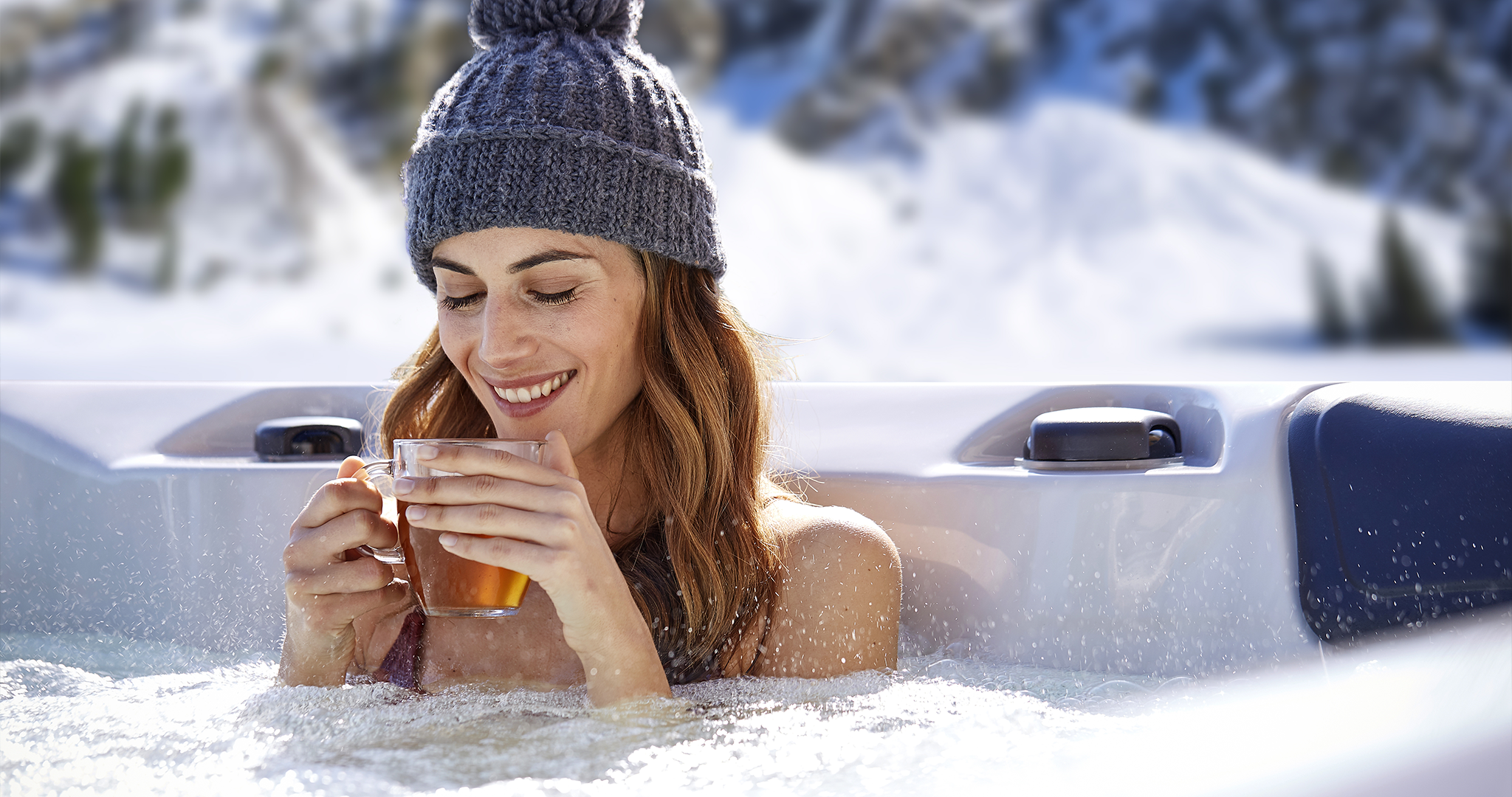
Tips for optimizing the energy consumption of your hot tub
A good heat pump is only one part of the equation. To maximize savings and comfort, it's advisable to follow a series of best practices:
- Always use a quality thermal cover
Most heat loss occurs through the water's surface. A well-fitting cover is essential to get the most out of the pump. - Smart scheduling program
Take advantage of off-peak electricity rates (if your contract allows it) and program the pump to maintain a stable temperature, avoiding large fluctuations. - Adjust the temperature to your actual usage
It's not always necessary to operate at the maximum temperature. Reducing it by 1–2°C can lead to significant savings in the medium term without affecting comfort. - Maintain good water quality
Clean filters and balanced water chemistry facilitate heat exchange and reduce the workload on the pump and the entire hydraulic system. - Place the pump in a suitable location
A well-ventilated space, with no obstacles to the entry and exit of air, improves performance and prevents recirculation of cold air. - Periodic review of the system
Preventive maintenance of your hot tub and heat pump ensures optimal performance and reduces the risk of problems. By following these tips, your investment in a heat pump becomes a strategic tool for controlling costs and enhancing your wellness experience.
Aquavia Spa incorporates heat pump solutions for jacuzzis, specifically designed for the private hydromassage environment. These are reversible hot tub pumps, designed to work in conjunction with the equipment's electronics and manufactured to European quality standards. Key advantages include:
Integration with the hot tub system: centralized temperature management from the control panel.
- High energy performance: models with optimized COP for different volumes and climates, aimed at users looking for how to choose a hot tub heat pump with efficiency and sustainability criteria.
- Compatibility with the Aquavia hot tubs range: from compact hot tubs to swimspas , with solutions adapted to different sizes and uses.
- If you are considering buying a hot tub or upgrading your air conditioning system, we recommend consulting with an official distributor to analyze your specific case (location, type of hot tub , usage habits and budget) and define the most suitable solution.
Choosing the right heat pump for your hot tub not only improves comfort but also directly impacts energy costs, sustainability, and the lifespan of your system. A well-informed decision, supported by hot tub -specific technology and a specialized manufacturer, translates into more enjoyment and fewer worries.



